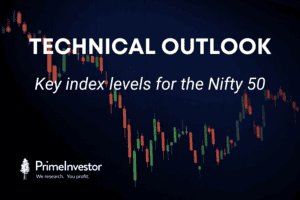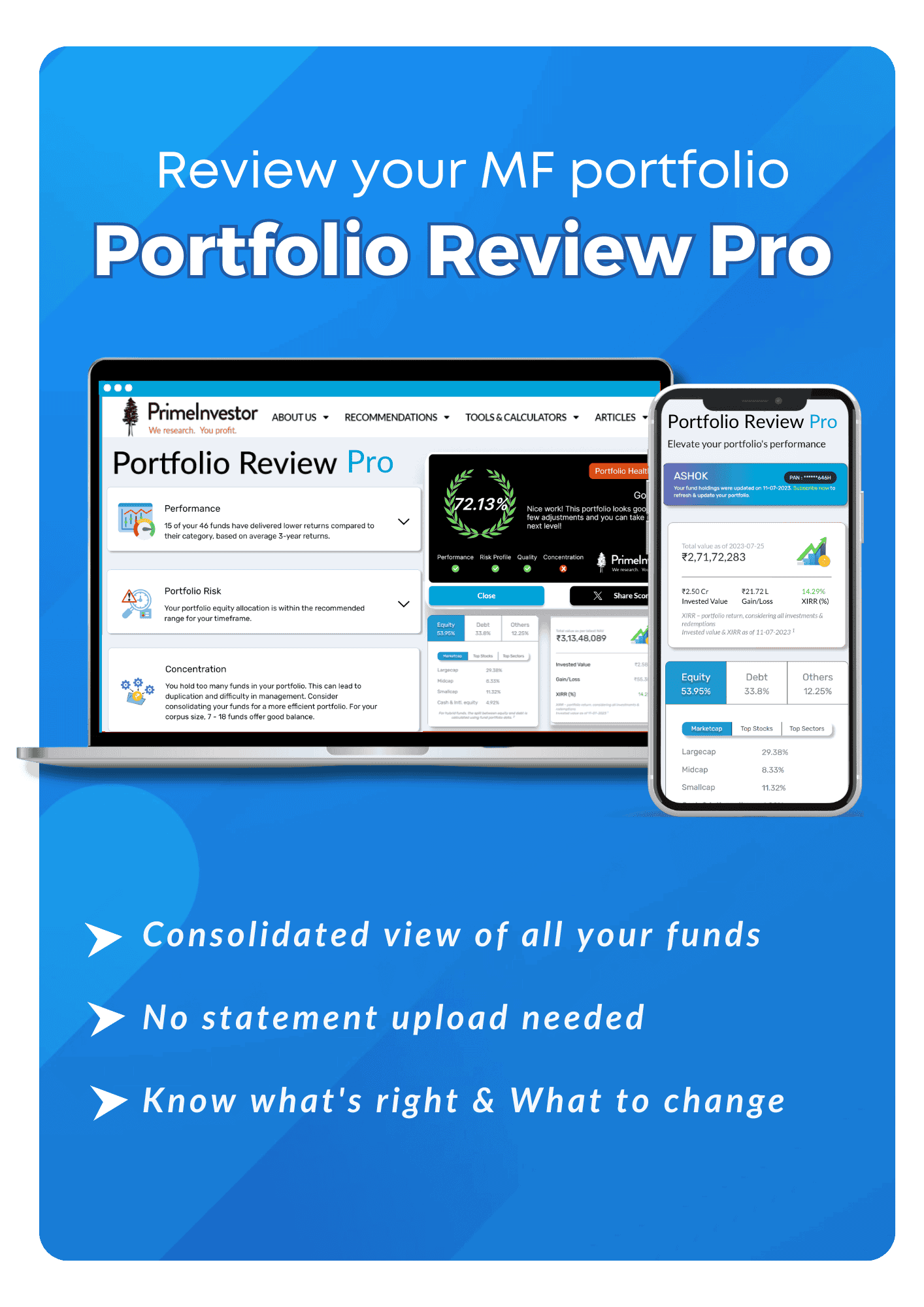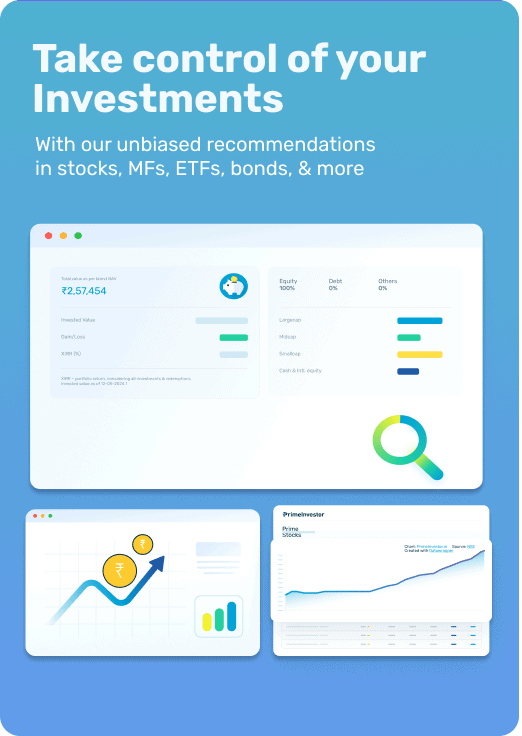The onset of the second wave of Covid has put long-term debt investors in India in a Trishanku-like situation (Trishanku was a king in Hindu mythology who was stuck between heaven and earth for perpetuity https://www.srichinmoylibrary.com/gim-183). They can neither earn capital gains from falling rates nor look forward to better accrual income from rising interest receipts. However, is you’re a debt investor, it not impossible to escape Trishanku’s fate. Just follow the strategy we outline below.

Stuck in limbo
Interest rates on long-term debt instruments in India stopped falling a few months ago, and looked ready to rebound sharply. But recent RBI actions and the second wave of Covid now threaten to postpone this revival.
The reason we say this is the ongoing tug-of-war between market forces and India’s central bank. Today, a combination of market forces persisting inflation, high fiscal deficit and a large State and Central government borrowing programme signal an over-supply situation in government bonds. Normally, this should have led to a sharp rise in government security yields. After all, if market fears there will be excess supply of g-secs soon, it will demand higher rates from the issuer. This should cause g-sec prices to fall and rates to rise.
But right now, the government does not really want a rise in market interest rates because it plans massive market borrowings this fiscal year. So, whenever the market yield on the 10-year government security tries to rise and stay above 6%, RBI has been intervening in the market to quell it. (RBI is the debt manager for the government).
The G-sap effect
The latest Brahmastra that RBI is using to whack down long-term interest rates is the Government Security Acquisition Programme or G-Sap announced in its latest monetary policy. Under the G-Sap programme, RBI has promised to buy up Rs 1 lakh worth of government securities in the first quarter of the fiscal year FY22. The Centre plans to issue bonds worth Rs 12.05 lakh crore to borrow from the markets in FY22. (https://www.thehindu.com/business/Industry/rbis-first-purchase-under-g-sap-10-set-for-april-15/article34275185.ece) So, RBI is hoping that by buying up Rs 3 or Rs 4 lakh crore worth of these bonds during the year through G-Sap can significantly address the over-supply problem and keep rates under control.
This new scheme will run parallelly with RBI’s older open market operations (OMOs) and Operation Twist. In OMOs, RBI buys g-secs to inject money into the market without announcing the quantum in advance. In Operation Twist, it sells short-term g-secs and buys long-term ones to reduce the difference between short-term and long-term rates. The common theme here, obviously, is RBI vacuuming up g-sec supplies to keep long-term rates under check.
In a slowing economy, RBI is likely to want to keep interest rates low to help struggling businesses and individual borrowers. This suggests that its interventions to quell interest rates on g-secs may continue.
With the second wave of Covid extracting a heavy toll, it is likely that both the Centre and States may need to up their borrowing targets even further this year. In a slowing economy, RBI is also likely to want to keep interest rates low to help struggling businesses and individual borrowers. This suggests that its market interventions to quell interest rates on g-secs may continue.
What all this means for long-term debt investors is that the interest rates on the safest option in the market, government securities, are likely to remain stuck in a rut, neither falling much nor rising decisively for the next six months to a year. At the same time, with the fall in rates arrested, capital gains on g-secs from here are unlikely to make up for low interest income. In fact, if rates rise a bit, the capital losses on g-sec prices can eat away some of your interest income.
While the pressure from RBI is maximum at the longer end of the g-sec curve (10-year g-sec), other segments are not free from such pressures either. The table below captures how the 3-year and 5-year g-sec have moved up a bit from their lows in July last year. The move has been sharpest (36 basis points) in the 5-year g-sec. But the absolute interest rate you stand to earn from 3 and 5-year g-secs is still too low to even keep up with inflation. This makes it quite sub-optimal for debt investors today to park any medium to long-term money in g-secs.
The spread story
With the safest bonds in the market (g-secs) offering poor rates, can you hunt for better rates among the highly rated corporate bonds? Unfortunately, there’s not much of an opportunity there either. In India, AAA rated corporate bonds traditionally offered 75-100 basis points more than comparable g-sec rates in normal times. But with Indian bond buyers scrambling for returns, the spreads (higher rates) that AAA rated companies offer over g-secs has shrunk sharply too in the last one year.
The table below captures how AAA rated company bonds used to offer 120 basis points more than g-secs last April, but offer just 50 basis points more now. This indicates that investors are not being compensated sufficiently for the risks in corporate bonds, making AAA rated corporate bonds quite a poor proposition currently.
Not only do you stand to earn barely 6-6.5% from such bonds as interest, you’ll also be risking capital losses if the spreads increase to historical levels. Spreads widening will mean interest rates on new AAA bonds will be much higher than those on the 10-year g-sec.
Spreads for corporate bonds in the AA+ and AA baskets have also shrunk, but not to the same extent as AAA bonds. These do offer reasonable opportunities for investing. In the interests of protecting your returns though, it may be best to stick to 1-3 year bonds that will not take too much of a beating from rising rates or an expansion in spreads. If you’re looking out for debt funds with higher return potential – but with some risk – at this juncture, funds focused on 1-3 year AA bonds in their portfolios are an option.
Rather than buy risky lower rated corporate bonds in the hunt for better rates, it makes sense for debt investors today to simply grit their teeth and stick to safe options today despite lower rates.
Fishing for returns lower down the rating scale in A+ or below securities which are barely investment grade can fetch you a much higher yield, as spreads in this segment are at a healthy 125-300 basis points. But this comes with risk to your principal, which is avoidable in this Covid second wave situation.
Therefore, rather than buy risky lower rated corporate bonds in the hunt for better rates, it makes sense for debt investors today to simply grit their teeth and stick to safe options today despite lower rates. A few months from now, as the second wave abates, spreads on AAA rated bonds are quite likely to normalise.
Though the RBI may manage to keep g-sec rates artificially low through its maneuvers, it is unlikely to be able or willing to control market forces that are exerting upward pressure on rates in other segments such as State Government or corporate bonds. A few months down the line therefore may prove a good time to buy corporate bond funds or PSU & Banking funds.
If you aren’t an active bond investor and all this discussion of spreads and yields confuses you, don’t worry. The staple investment for Indian fixed income investors – NBFC fixed deposits from top rated financial firms are likely to offer better rates soon.
We are already seeing signs in the market of top-rated NBFCs hiking their fixed deposit rates at the 3 to 5-year buckets. Not many watchers have noted or commented on it, but the bluechip HDFC’s fixed deposit programme offered rates of just 5.6% to 5.65% for 2 to 3-year deposits in October 2020. Today however, the rates have climbed to 5.8% to 6.4%.
Small savings bonanza
If you’re too impatient to wait for the next few months, you should max out the opportunity offered by the small savings schemes right now. Despite being government-backed, these schemes today offer very attractive spreads over comparable g-secs. In fact, in a topsy turvy situation, today, post office schemes like the 5 year time deposit, Monthly Income Account, NSC and Senior Citizens Savings Scheme despite being sovereign backed, offer attractive spreads over AAA rated corporates.
Bear in mind, though, that the government, announced steep cuts in the rates on these schemes on March 31 2021 before suddenly developing cold feet and withdrawing the move. (https://www.bloombergquint.com/economy-finance/government-withdraws-cut-in-small-savings-schemes-citing-oversight) Once election-related compulsions are behind, there’s a good chance that it will like to implement these cuts in keeping with its policy of keeping its borrowing costs low. As such cuts could very well take effect from July 1, senior citizens and regular income seekers should strike while the iron is hot to lock into these rates.






21 thoughts on “What is the outlook for interest rates and debt funds?”
Parking funds for short term i.e., 6-9 months – which instrument do you prefer.
For the current interest rate scenario, what is the best option between a Senior Citizen FD from Bajaj Finance ltd (7.12% fixed rate for 3 years) and RBI Bond (floating interest rate of 7.15% for 7 years)?
The RBI bond is far safer but carries a 7 year lock in. If you can manage the 7 year lockin you should prefer it
thanks.. Isn’t there a potential drop in interest rates expected in June/July. Is there additional possibility for the interest rates to drop after 6 months (also)?
Dear Sir/Mam, Can we have a write-up on PPFAS latest offering in conservative hybrid fund. Can we replace some part of our debt portfolio with this fund.
The PPFAS fund comes from a quality AMC with a good track record. However, the nature of fund still needs watching to judge investment worthiness. In debt, where strategy can be dynamic, it is very hard to take a call on what the risk or performance will be. This apart, we do not view conservative hybrid funds as a useful category, given that these funds can be unpredictable in both performance and strategy, and because there are other alternatives. Please read here: https://www.primeinvestor.in/prime-views-why-you-should-avoid-this-fund-category/. Please also read when you can consider looking at an NFO and when to avoid it here: https://www.primeinvestor.in/investing-in-nfos-3-questions-you-should-ask/
Thanks, Bhavana
Do you feel equity arbitrage funds can give better return than any type of debt fund in this coming 6 to 9 months ?
No it is unlikely as they simply reflect the short term cost of leverage.
That was a great article. Many thanks. So people have to stop solely depending on FD and move into riskier assets if they don’t wish to ‘earn’ lower and lower incomes – esp,. retirees.
Or accept lower returns and wait for a few months for RBI intervention to stop 🙂
Within Debt Funds can I continue to invest in Banking/PSU and Corporate Bonds funds for 2-3 year horizon?
How about Short term and Floating rate fund for 1-2 years?
For 1-2 years do look at short term and ultra short term. Do use Prime recos and look for funds that run 1-2 year maturities.
For debt fund investor in low duration & short term funds, would it be prudent to move to Floating Rate funds?
No these funds would also capture an uptrend in rates.
Thanks Aarti. Basis your previous advice, i invested in Floater funds. Whats the outlook for them? So far the XIRR is ca 2.5-3% since mid Dec 2020.
Our prior view was that rates would start moving up quickly. I think recent developments like the covid second wave may delay that move. This can lead to sluggish performance from floater funds. If your investing horizon is 2-3 years you need not worry.
Do you suggest moving out from a floater fund if the horizon is exactly 1 year from now?
Ultra short may fare better but have to weigh the small return differential against the tax implications.
Thanks for this article. I noticed that 10 year g sec yields are back to just above 6%. What is your view on the assessment that Arbitrage funds ( being the carry trade it is) will pick up the underlying inflationary trends and deliver better returns in the time ahead than short term / MM / UST bond funds?
Thanks
In my view, though supposed to reflect cost of carry, arbitrage returns more a function of trader risk appetite and willingness to leverage than underlying inflation or bond mkt trends. So I think returns unlikely to shoot up.lot of artificial liquidity pumping also from RBI so that keeps rates down
Thanks for your response
Comments are closed.